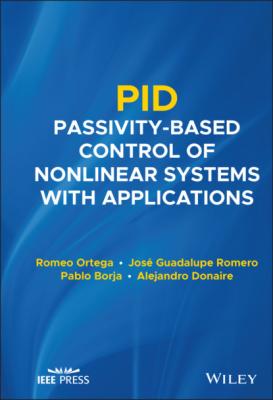PID Passivity-Based Control of Nonlinear Systems with Applications. Romeo Ortega
Чтение книги онлайн.
Читать онлайн книгу PID Passivity-Based Control of Nonlinear Systems with Applications - Romeo Ortega страница 10
 alt="double-vertical-bar dot double-vertical-bar Subscript 2"/>, respectively.
alt="double-vertical-bar dot double-vertical-bar Subscript 2"/>, respectively.
Given a function
Throughout this book, we consider nonlinear systems described by differential equations of the form
(1)
where
We also consider the case of port‐Hamiltonian systems when the vector field
(2)
where
1 Introduction
Motivated by current practice, in this book, we explore the possibility of applying the industry‐standard proportional‐integral‐derivative (PID) controllers to regulate the behavior of nonlinear systems. As is well known, PID controllers are universal, in the sense that they incorporate knowledge of the system's past, present, and future, and they are overwhelmingly dominant in engineering practice. PIDs are highly successful when the main control objective is to drive a given output signal to a constant value. PIDs, however, have two main drawbacks, first, the task of tuning the gains is far from obvious when the system's operating region is large; second, in some practical applications, the control objective cannot be captured by the behavior of output signals.
In this book we show that, for a wide class of systems, these two difficulties can be overcome by exploiting the property of passivity, which in the case of physical systems captures the universal feature of energy conservation. To achieve this end, we propose a new class of controllers called PID passivity‐based controls (PBCs), whose main construction principle is to wrap the PID around a passive output of the plant. Since PIDs define (output strictly) passive systems for all positive gains, and the feedback interconnection of passive systems is stable,